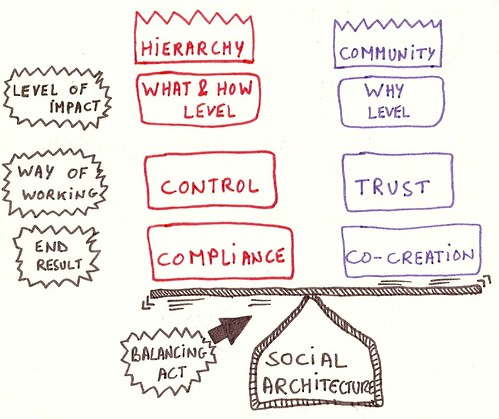Since the launch of the Social Architecture ebook two weeks ago, two main questions keep coming back: Is this the end of hierarchy? and How do I create a community?
1. It’s about Balance
The one thing you need to know about social architecture is that it not something replacing hierarchy. Social architecture is a balance between a control-based hierarchy and a trust-based network of communities.

Make no mistake about it: communities are not replacing hierarchy. We still need hierarchy and control to get things done. The only difference with the old days is that control will only get you half-way. The Industrial Revolution is over.
Today, getting things done requires an extra layer on top of hierarchy. This is the layer of communities, tribes, movements, problems and solutions. Each of these communities want to be hosted. And you need those communities to get results in today’s economy.

2. Don’t start a Community
It’s tempting to think that you need to create a community for the thing you want to kick-off. Here’s the secret: you don’t. That community already exists.
Here’s a hint: communities typically gather around business processes and solutions that are transversal. A hierarchy with silos can’t cater for that.
So instead of creating the community you should be ‘listening for’ the community. Chances are that it is right there below your feet and that you’ve been standing on it all the time.
Search for the business process owners or other people that have been fighting for a good cause without a hierarchy to back them up.


Pingback: It’s Not the Behavior, It’s the Habit! | Reply-MC()